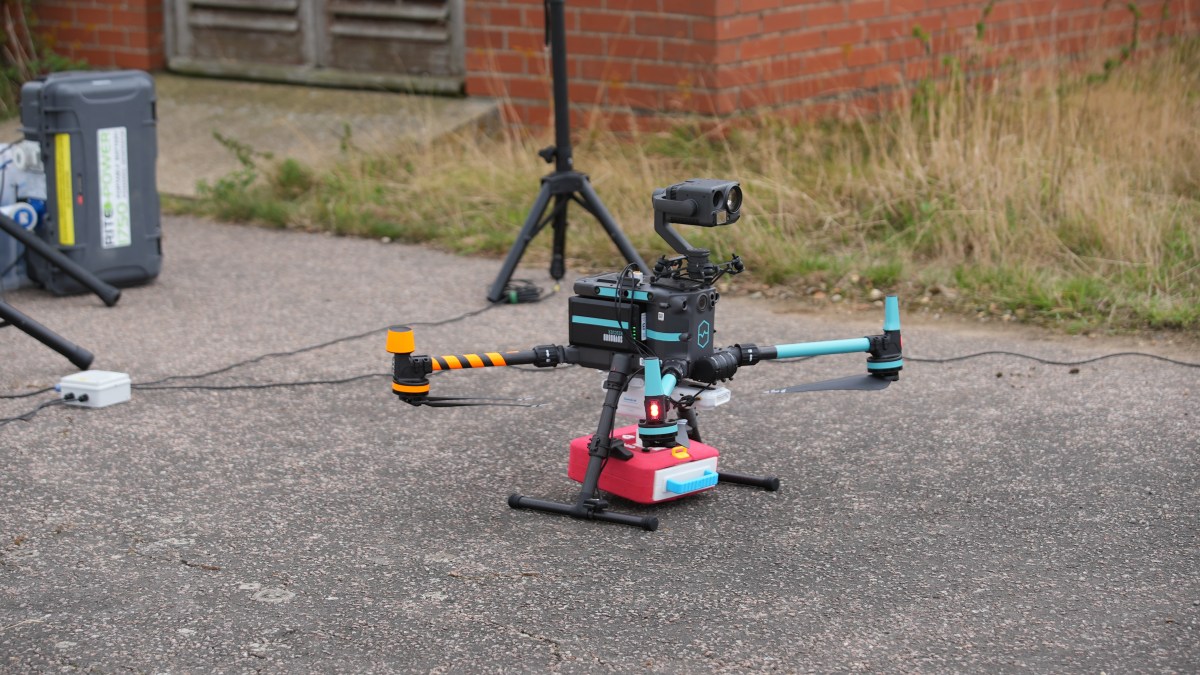Health
Drones Set to Deliver Defibrillators to Heart Attack Victims

The use of drones to deliver defibrillators to individuals experiencing cardiac arrest could significantly improve survival rates, according to recent research. Defibrillation can more than double the chances of survival, yet these life-saving devices are used in fewer than one in ten cases. This innovation aims to address the critical time constraints faced by emergency responders.
Researchers are exploring the feasibility of deploying drones equipped with defibrillators to deliver them directly to heart attack victims. The speed at which a defibrillator can reach a patient is crucial, as every minute without defibrillation reduces the likelihood of survival by approximately 10%. This initiative could transform emergency medical response, particularly in urban areas where traffic delays often hinder timely assistance.
Transforming Emergency Response
The concept of using drones for medical emergencies is gaining traction globally. A study conducted by the University of Maryland found that drones could deliver defibrillators to patients up to 12 minutes faster than traditional emergency services in urban settings. This improvement could result in thousands of additional lives saved each year.
The implementation of this technology is not without challenges. Regulatory hurdles, safety concerns, and the need for robust communication networks must be addressed before widespread adoption can occur. Current regulations in many countries do not permit drones to operate in populated areas without specific permissions, which can complicate timely deliveries.
Significantly, various pilot programs are already underway. In July 2023, a successful trial in Sweden demonstrated that drones could deliver defibrillators within minutes to individuals experiencing cardiac events in remote locations. Participants in the trial reported high confidence in the technology, emphasizing its potential to save lives.
Future Implications for Health Technology
As health technology continues to evolve, the integration of drones into emergency medical services represents an exciting frontier. Partnerships between tech companies and healthcare organizations are crucial for developing efficient systems that can respond to emergencies effectively.
In addition to defibrillator delivery, drones could also be used for other medical supplies, such as medications or blood products, enhancing the overall capabilities of emergency services. This multifaceted approach could lead to a future where critical medical interventions are not constrained by geographical challenges.
The potential for drones to revolutionize emergency response is promising, particularly as communities seek innovative solutions to improve health outcomes. With ongoing research and pilot programs, the vision of drones delivering lifesaving equipment directly to those in need is becoming increasingly feasible. As technology advances, the hope is that more lives will be saved in the critical moments following a cardiac arrest.
-

 Health2 months ago
Health2 months agoNeurologist Warns Excessive Use of Supplements Can Harm Brain
-

 Health2 months ago
Health2 months agoFiona Phillips’ Husband Shares Heartfelt Update on Her Alzheimer’s Journey
-

 Science7 days ago
Science7 days agoBrian Cox Addresses Claims of Alien Probe in 3I/ATLAS Discovery
-

 Science5 days ago
Science5 days agoNASA Investigates Unusual Comet 3I/ATLAS; New Findings Emerge
-

 Science2 days ago
Science2 days agoScientists Examine 3I/ATLAS: Alien Artifact or Cosmic Oddity?
-

 World2 months ago
World2 months agoCole Palmer’s Cryptic Message to Kobbie Mainoo Following Loan Talks
-

 Entertainment3 months ago
Entertainment3 months agoKerry Katona Discusses Future Baby Plans and Brian McFadden’s Wedding
-

 Entertainment3 months ago
Entertainment3 months agoEmmerdale Faces Tension as Dylan and April’s Lives Hang in the Balance
-

 Entertainment3 months ago
Entertainment3 months agoLove Island Star Toni Laite’s Mother Expresses Disappointment Over Coupling Decision
-

 Entertainment2 months ago
Entertainment2 months agoMajor Cast Changes at Coronation Street: Exits and Returns in 2025
-

 World2 months ago
World2 months agoCoronation Street’s Asha Alahan Faces Heartbreaking Assault
-

 Entertainment2 weeks ago
Entertainment2 weeks agoStefan Dennis and Dianne Buswell Share Health Update on Strictly Come Dancing









